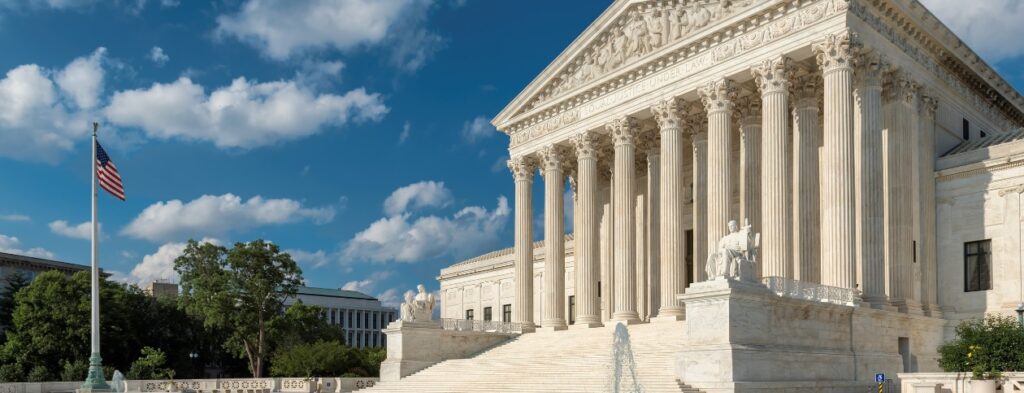

TransUnion v. Ramirez: Supreme Court Narrows Article III Standing
The U.S. Supreme Court’s decision in TransUnion v. Ramirez has reshaped how courts handle Article III standing in class action lawsuits. This landmark ruling makes it harder for plaintiffs to bring claims against corporate defendants for violations of federal statutes without showing a concrete injury.
The Court ruled that a statutory violation alone does not establish standing. Instead, plaintiffs must prove they suffered a tangible harm that can be redressed in court. This has major implications for tort class action lawsuits, consumer protection claims, and corporate accountability.
Details of the Case: TransUnion and the OFAC Name Screen Alert
TransUnion, a major credit reporting agency, compiles consumer financial data to create credit reports used by third-party businesses to assess creditworthiness.
The controversy in this case arose from an add-on product called the OFAC Name Screen Alert. This tool compared consumer names against the U.S. Treasury Department’s Office of Foreign Assets Control (OFAC) list, which includes known terrorists, drug traffickers, and other serious criminals.
-
If a consumer’s name matched someone on the list, TransUnion placed a “potential match” alert on their credit report.
-
Unfortunately, this system created numerous false positives, wrongly flagging innocent consumers as suspected criminals.
One such consumer was Sergio Ramirez, who was denied a car purchase at a California Nissan dealership because his credit report falsely identified him as a potential terrorist.
The Class Action Against TransUnion
Ramirez sued TransUnion under the Fair Credit Reporting Act (FCRA), alleging that the company failed to ensure the accuracy of its credit reports.
-
A class action was certified with 8,185 members.
-
Out of these, 1,853 members had credit reports with false OFAC alerts shared with third-party businesses.
-
The remaining 6,332 members had inaccurate reports, but their reports were never sent to any third parties.
This distinction became central to the Court’s ruling.
Supreme Court’s Majority Opinion
In a 5-4 decision, Justice Brett Kavanaugh wrote the majority opinion.
Key Findings:
-
Concrete Injury Requirement
-
For Article III standing, plaintiffs must show a personal stake and a concrete harm caused by the defendant that can be remedied by judicial relief.
-
A violation of a statute alone is insufficient.
-
-
Reputational Harm vs. No Harm
-
For the 1,853 members whose reports were shared, the false OFAC alerts resembled defamation, which is a traditionally recognized tort. This satisfied the requirement of concrete harm.
-
For the 6,332 members whose reports were never sent, no actual harm occurred. Merely having inaccurate data internally held by TransUnion was not enough to establish standing.
-
Future Implications of TransUnion v. Ramirez
1. Impact on Class Action Lawsuits
This ruling significantly raises the bar for class actions. Plaintiffs must now prove that every class member suffered a concrete injury. Attorneys filing class actions in federal courts will need to be more selective in defining their classes.
2. Corporate Accountability Concerns
The decision potentially reduces the legal risks for corporations. Companies may escape liability for statutory violations if plaintiffs cannot demonstrate direct, concrete harm. This could affect cases under statutes such as the FDCPA (Fair Debt Collection Practices Act) and the TCPA (Telephone Consumer Protection Act).
3. State Courts as an Alternative
Justice Clarence Thomas, in his dissent, pointed out that state courts are not bound by Article III standing requirements. States like Illinois and New York, which have more lenient standing rules, may still allow “no-injury” class actions.
This opens the door to jurisdiction shopping, where plaintiffs’ attorneys choose states with favorable laws and judges more open to statutory claims. However, this could lead to multiple lawsuits across different states, creating additional burdens for both businesses and the court system.
Final Thoughts
The TransUnion v. Ramirez decision has reshaped the balance between consumer rights and corporate liability. By requiring a concrete injury for Article III standing, the Supreme Court has limited the reach of class actions in federal courts.
While this is a victory for corporate defendants, plaintiffs may increasingly turn to state courts for relief. The long-term effects will likely influence how corporations handle compliance with statutes, how attorneys structure class actions, and how courts manage consumer protection cases moving forward.
1 TransUnion LLC v. Ramirez, 594 U.S. . ____, 1 (2021).
2 Id.
3 Id. at 8.
4 Id.
5 Id.
6 Id.
7 Id. at 9.
8 Id. at 20.
9 Id. at 11.
10 Id. (citing Reins v. Byrd, 521 U.S. 811 (1997)).
11 Id.
12 Id. at 12.
13 Id. at 14.
14 Id.
15 Id. at 20.
16 Id.
17 Id. at 22.
18 Id. at 26.
19 Id. at 17.
20 John Ryan, Barbara Fernandez & David Schultz, TRANSUNION V. RAMIREZ: WHAT DOES IT MEAN? ACA INTERNATIONAL (2021), https://www.acainternational.org/news/transunion-v-ramirez-what-does-it-mean (last visited Jul 1, 2021).
21 TransUnion v. Ramirez: The Supreme Court Further Narrows Article III Standing And Rejects “No Injury” Class Actions, JD SUPRA (2021), https://www.jdsupra.com/legalnews/transunion-v-ramirez-the-supreme-court-1255306/ (last visited Jul 1, 2021).
22 TransUnion 594 U.S. at 49.
23 TransUnion v. Ramirez: The Supreme Court Further Narrows Article III Standing And Rejects “No Injury” Class Actions, JD SUPRA (2021), https://www.jdsupra.com/legalnews/transunion-v-ramirez-the-supreme-court-1255306/ (last visited Jul 1, 2021).
24 Thomas R. Bennett, The Paradox of Exclusive State-Court Jurisdiction Over Federal Claims, 105 Minn. Law Review, 121, 1233. (2021).
